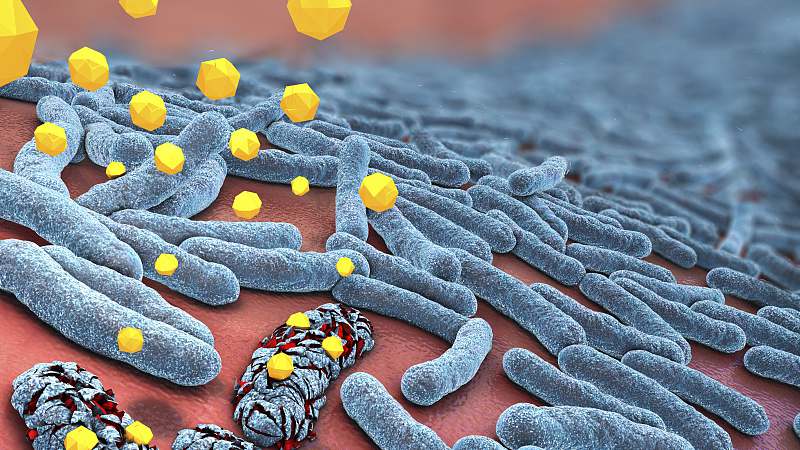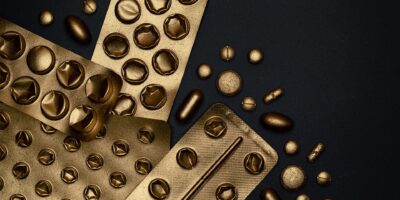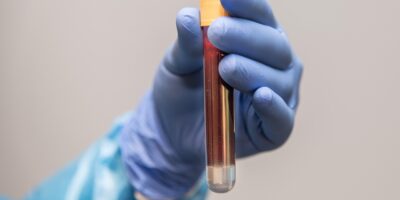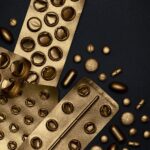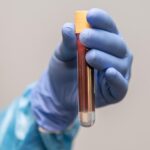Antibiotics are powerful organic molecules that kill bacterial cells or inhibit bacterial growth. As these drugs have been increasingly used over the last century bacteria have naturally evolved to become resistant to normally therapeutic doses. This is especially seen in gram negative bacteria which have a mostly impermeable outer membrane which resists the majority of antibiotic treatments. This makes it increasingly necessary to enhance our current range of antibacterial therapies. A study published by Science Translational Medicine stating that, “Silver Enhances Antibiotic Activity Against Gram-Negative Bacteria” takes a dive into this ever growing problem by analyzing the effects of silver treatments on bacterial infections. There are records of silver being used as treatments for infection dating back to 400 B.C but it still “has an unclear bactericidal mode of action” which gave researchers reason to analyze its mode of mechanism within bacterial cells and use this knowledge to potentiate current antibiotic therapies.
Researchers first analyzed E.coli, a model gram-negative bacteria, in its log phase, against various silver ion concentrations and found that 30uM displayed a significant decrease in viable cells which gave a baseline for the rest of the study. To explore the mechanism of silver within the cells, tests were done on iron homeostasis, the ETC, and the Krebs cycle with and without Ag+ treatment. Their results showed that Ag+ disrupts multiple cellular processes that are associated with an increase in cell death and membrane permeability. Unfortunately the question still remained on how these mechanisms can be harnessed to potentiate current antibiotics.
Initially the researchers reasoned that testing a combination therapy of varying antibiotics and Ag+ concentrations in vitro would yield useful data. As expected the samples treated with either Ag+ or antibiotics alone had little to no change but found that antibiotics that use radical oxygen species (ROS) as a method of cell death were much more active when treated in combination with Ag+ suggesting that Ag+ somehow primes cells for ROS production which results in cell death. This makes silver a useful method for potentiating these specific antibiotics. Since Ag+ was also found to increase outer membrane permeability in gram-negative bacteria, which is a large contributor to antibiotic resistance, it was theorized that Ag+ could increase permeability to large antibiotic molecules that are normally impermeable to gram-negative outer membranes. To test this experiments were carried out on E.coli in vitro using Ag+ and vancomycin, a large molecule antibiotic normally impermeable to E.coli. From these experiments it was found that Ag+ and vancomycin in combination resulted in significantly greater cell death than either treatment alone. This suggested that harnessing the ability of Ag+ to increase outer membrane permeability can allow large molecule antibiotics to be effective against gram-negative bacteria.
With positive results from in vitro testing further experiments were carried out on bacterial biofilms found inside infected mice bladders to analyze in vivo treatment. Multiple experiments were carried out using varying combination treatments of Ag+ and gentamicin and found the combination of both to be more effective at treating the biofilm infection then either Ag+ or gentamicin alone. Specifically a treatment of 2.5ug/ml of gentamicin and 60uM of Ag+ was found to reduce the bladder infection the most. Although a 60uM concentration was found to be most effective at inhibiting the bacterial biofilm, the study reported a lethal dose of Ag+ to be ~50uM in mice meaning an effective dose would be quite toxic to healthy mice cells.
Despite the fact that the experiments from this study show both positive results from both in vitro and in vivo treatments it was stated that further studies testing the toxicity of Ag+ in humans and possible methods to administer the drug safely must be performed before clinical trials can be considered. Although with recent advancements in the field of nanotechnology the team said they can “envision synthesizing Ag+ nanoparticles with antibiotic-decorated surfaces within an intelligent material that controls release of active antimicrobial compounds at the site of infection.” A treatment like this would be a breakthrough for antibiotic therapies on gram-negative bacteria.
With more bacteria becoming resistant to current antibiotic treatments the need for drugs to potentiate the current antibiotic arsenal is critical. Morones-Ramirez and his colleagues have not only provided evidence for the mechanism of Ag+ on cell functions but demonstrated an effective Ag+ combination treatment with antibiotics that has potential to fight antibiotic resistant infections with further development and clinical phases.
Source: Morones-Ramirez JR, Winkler JA, Spina CS, Collins JJ. Silver enhances antibiotic activity against gram-negative bacteria. Science translational medicine. 2013 Jun 19;5(190):190ra81-.
